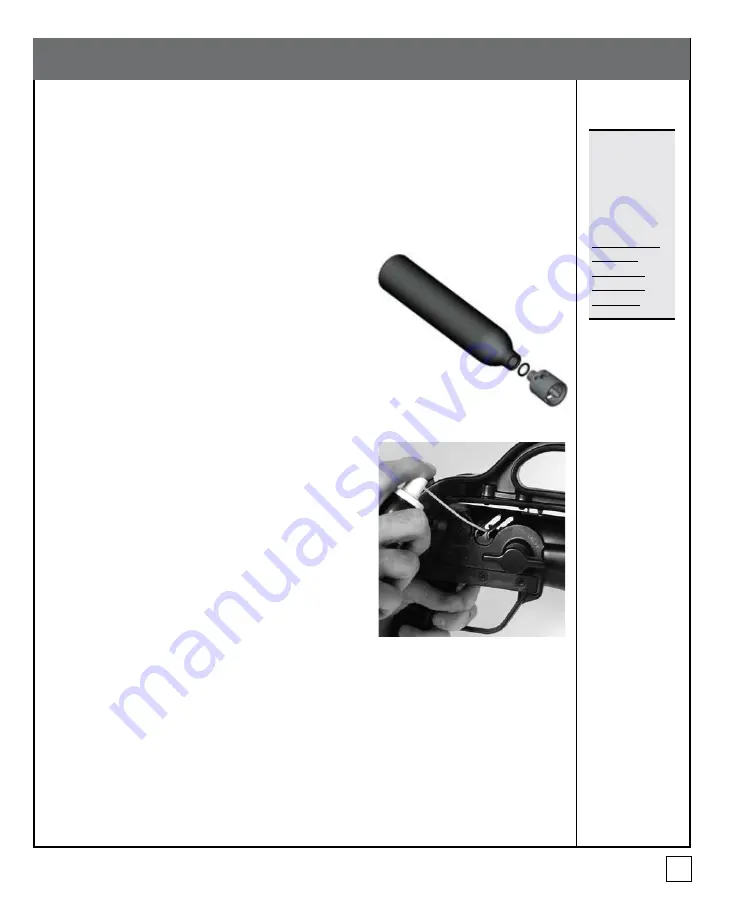
Tactical ResQmax Operation Manual
27
Care of the Projectile
The Projectile can be used over and over again if cared for properly. Any visible damage to the
Projectile is cause for immediate replacement.
DO NOT ATTEMPT TO REFILL A DAMAGED
CYLINDER
. This may cause an accident resulting in serious bodily injury or death (refer to page
17, section “Protecting the Cylinder/Projectile”).
After use and before filling again to be stored, the Projectile Cylinder and the Nozzle Assembly
should be separated and maintained. The Projectiles should not be filled until the steps below
are taken. Regardless of whether the equipment was used in fresh or salt water, there will be
residue in the cylinder that may give rise to corrosion if not thoroughly rinsed.
Figure 25a -
Cylinder and Nozzle Assembly
1. Unscrew the Nozzle Assembly from the Projectile
Cylinder by turning it in a counter-clockwise direction
(Fig. 25a).
2. Thoroughly flush both parts with fresh water, shake
out excess water, and let air dry.
3. Inspect the Projectile Cylinder and the Nozzle for any
damage or corrosion.
4. Once dried, lubricate the threads on the Nozzle Assembly
with Corrosion Block and screw the Nozzle Assembly
back into the Projectile Cylinder in a clockwise direction
until hand tight (Fig. 25a). DO NOT OVERTIGHTEN.
DO NOT use any sealant or tape on the threads of the
Nozzle. Corrosion Block can be used on any part of the
Projectile. Each Projectile Cylinder is intended to have
a maximum service life of five years from the date of
manufacture and must be removed from service at
that time or sooner if there is any visible evidence of
damage. Each Projectile Cylinder is date stamped. It is the
responsibility of the purchaser to ensure that the Projectile
Cylinder is not used after the service life has expired.
Figure 25b - Lubrication of Mechanism
with Corrosion Block
Care of the Launcher
The Launcher has a stainless steel Mechanism. The Launcher should be rinsed after all maritime
operations in order to keep corrosion to a minimum. Corrosion Block should be used as a
lubricant on the Outer Ring of the Launcher Mechanism by reaching in through the vent holes
on the Launcher (Fig. 25b). If a Projectile Cylinder containing residual water is pressurized and
launched, the Mechanism O-ring can become dislodged. If there is an audible air leakage when
the Projectile is loaded into the Launcher and the Valve Key is used to open the Projectile Valve to
pressurize the system, check if the Launcher Bleed Screw is properly tightened (refer to page 16).
If the Launcher Bleed Screw is closed and the leakage persists, the Mechanism O-ring should be
checked and replaced if necessary; please contact the Manufacturer for instructions or service.
Maintenance
Note:
Inexpensive
replacement
Projectile
Cylinders are
readily available
from the
Manufacturer.
DO NOT USE
a visibly
damaged
Projectile
Cylinder!
























